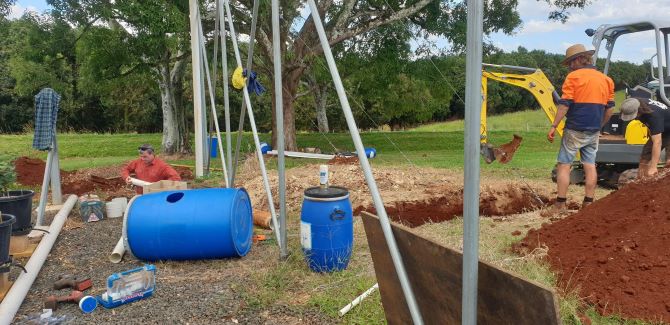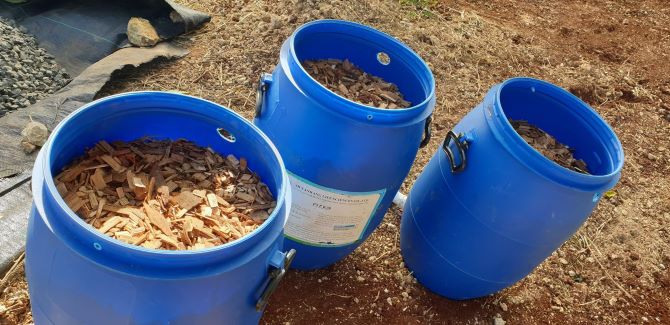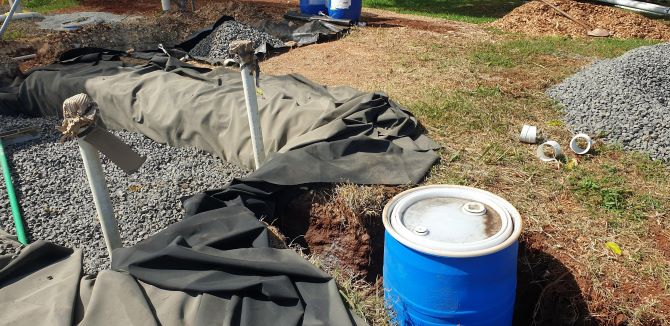
Wetland and bioreactor trials installed at Wollongbar
7 November 2022

The Clean Coastal Catchments (CCC) research project is building an artificial wetland and a woodchip bioreactor trial at the Wollongbar Primary Industries Institute.
Our researchers will study how much nitrogen the wetland and bioreactor structures can remove from waste water draining off 300 potted blueberries. The irrigated blueberry crop is growing under cover at Wollongbar as part of ongoing CCC research into best practice fertiliser management.
Beneficial bacteria living in wetlands and in the bioreactor woodchips, can consume excess nitrogen from waste water. Vegetation in wetlands can also take up nitrogen through their root systems.

Excess nitrogen from agricultural fertilisers poses a serious environmental threat to waterways, increasing the risk of algal blooms and other water quality issues that can cause harm to marine life, not to mention the impact of potential greenhouse gas emissions.
When construction is complete, Diana Unsworth, Melinda Simpson, and Dr Sophie Parks from the CCC team, will quantify just how much nitrogen can be captured through the wetland and bioreactor trials.
Water quality monitoring will also measure total salt concentrations (conductivity), acidity (pH), and dissolved oxygen levels, along with sampling for nutrients such as phosphate, nitrate, and nitrite.
Water sampling from the artificial wetland will commence in Autumn 2023 after the newly planted reed bed has had time to establish and grow.
Sampling from the bioreactor drums will be able to start much sooner, as the bacteria population in the woodchips can establish rapidly with the capacity to remove nitrates within just a few weeks.

The researchers will assess seasonal variations in the effectiveness of the bioreactor trial during the relatively dry winter period on the north coast, as well as both wet and dry periods in summer.
The next step for the CCC project will be to come up with best practice specifications, along with estimated costs, for local berry farmers interested in installing their own bioreactor or artificial wetland.
CCC research is delivered by the NSW Department of Primary Industries and funded through the NSW Marine Estate Management Strategy.

